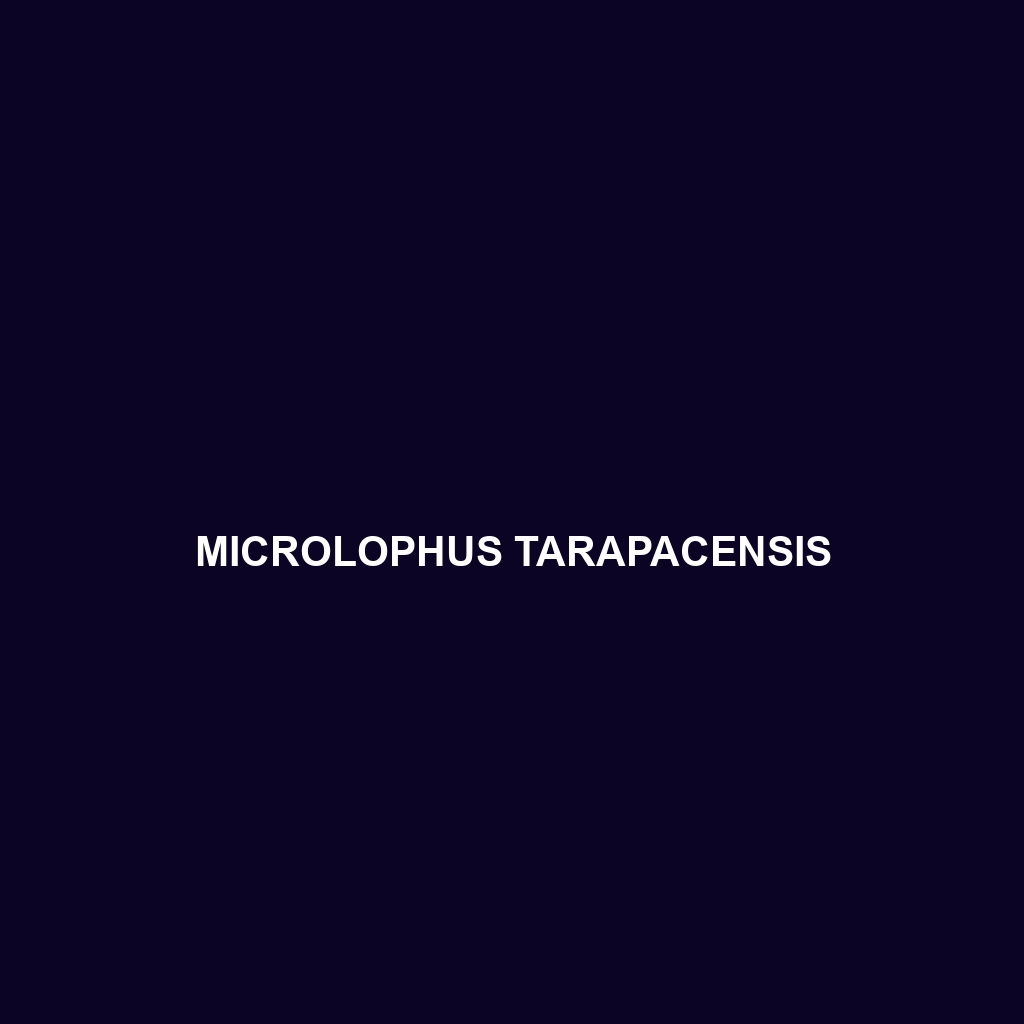Discover the Microlophus tarapacensis, also known as the Tarapacá lizard, a fascinating insectivore native to the arid coastal regions of northern Chile. With its remarkable camouflage, robust build, and unique behaviors, this lizard thrives in rocky outcrops while playing a vital role in its ecosystem.
Tag: Chilean lizard species
Liolaemus vallecurensis
Liolaemus vallecurensis, a medium-sized lizard from South America, thrives in semi-arid habitats of Argentina and Chile, exhibiting distinctive earthy coloration for camouflage and engaging in vibrant territorial displays during the breeding season. This insectivorous species plays a crucial role in its ecosystem by regulating insect populations while also serving as prey for larger predators.
Liolaemus ramirezae
<p><b>Liolaemus ramirezae</b> is a medium-sized lizard native to the temperate rainforests of southern Chile and Argentina, known for its vibrant coloration and excellent climbing abilities. This adaptable insectivore plays a crucial role in its ecosystem by controlling insect populations while serving as a food source for larger predators.</p>
Liolaemus multimaculatus
Explore the vibrant Liolaemus multimaculatus, or multi-spotted lizard, known for its striking coloration and agile climbing abilities. Inhabiting the temperate forests of southern South America, it plays a crucial role in the ecosystem as both a predator and prey, utilizing its unique camouflage to thrive in diverse habitats.
Liolaemus kolengh
<p><b>Liolaemus kolengh</b>, or the Kolengh lizard, is a distinctive insectivorous lizard found in the temperate forests and savannas of southern Chile and Argentina, featuring a streamlined body that can vary in color from green to grey, and exhibits fascinating social interactions and unique mating displays. Its role in the ecosystem includes controlling insect populations and serving as prey for larger predators, underscoring its importance in maintaining biodiversity.</p>
Liolaemus erroneus
Discover the fascinating Liolaemus erroneus, a resilient lizard native to the rugged Andes mountains in Chile and Argentina, known for its stunning coloration, strong climbing abilities, and crucial role in the ecosystem as both predator and prey. With a diet primarily consisting of insects and a unique adaptation to high altitudes, this species is an exemplary representation of biodiversity in montane habitats.
Liolaemus diaguita
Discover the Diaguia lizard (Liolaemus diaguita), a remarkable species native to the rocky, arid regions of north-central Chile and northwest Argentina, known for its distinctive coloration, agile movement, and critical role in the ecosystem as an insectivore. With unique adaptations for survival in extreme climates, this fascinating lizard is essential for pest control and maintaining ecological balance.
Liolaemus curis
Discover the vibrant <b>Liolaemus curis</b>, a medium-sized insectivorous lizard native to the southern Andes of Argentina and Chile, known for its striking camouflage and unique climbing abilities. With a vital role in its ecosystem, this vulnerable species contributes to insect population control and biodiversity while thriving in temperate forests and savannas.
Liolaemus capillitas
<h2>Short Description</h2> <p><b>Liolaemus capillitas</b> is a captivating lizard species native to the temperate forests and dry shrublands of southern South America, known for its slender body, vibrant coloration, and intriguing behavior. This insectivorous species plays a vital role in its ecosystem by controlling insect populations and serving as prey for various predators.</p>
Liolaemus baguali
Discover the fascinating Liolaemus baguali, a resilient lizard native to the mountainous regions of Chile and Argentina, characterized by its slender body measuring 12 to 25 cm and a diet primarily consisting of insects. This species thrives in diverse habitats, showcasing unique behaviors and playing a vital role in maintaining ecological balance.









